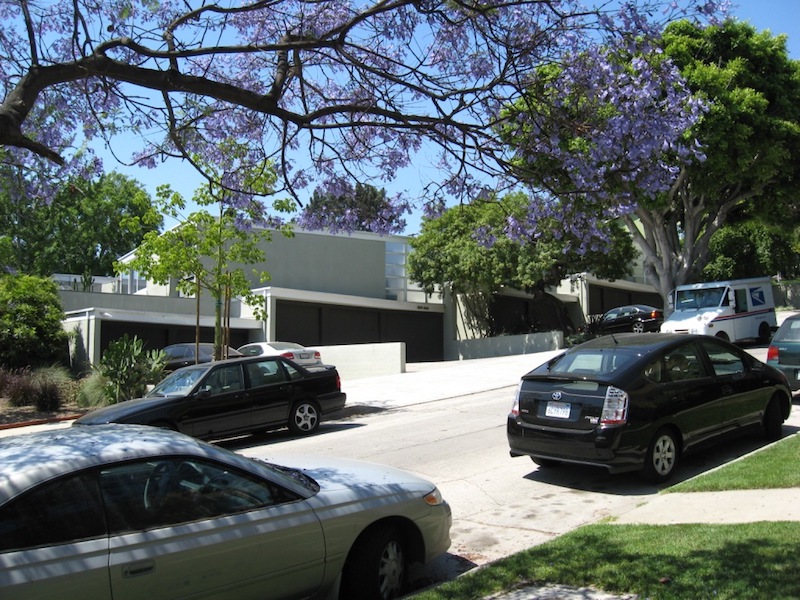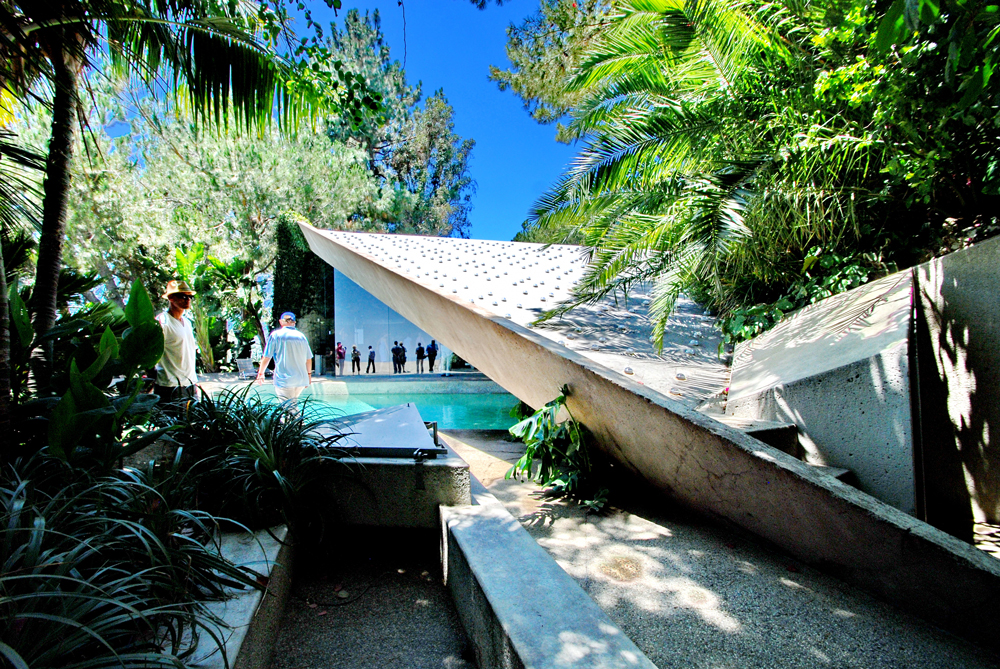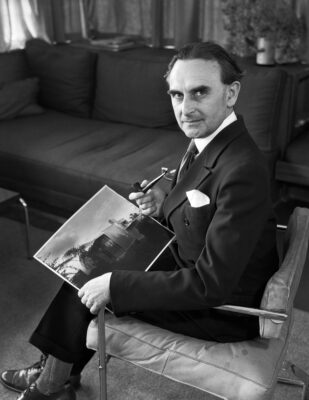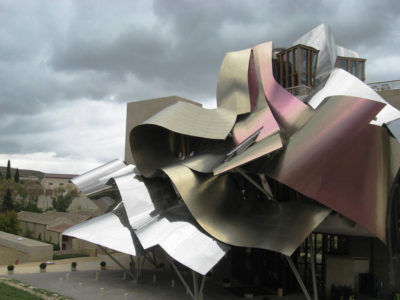
Gregory Ain
Gregory Ain
Gregory Ain, 1908-1988, Pittsburgh born, Modernist architect. He was described by J Edgar Hoover (First Director of the FBI) as
‘the most dangerous architect in America’,
Pittsburgh born, lived, worked and died in Los Angeles. A teacher of Frank Gehry at USC, a man whose spirit is best captured by Sam Hall Kaplan of the Los Angeles Times who called him
“a rare, humanistic architect, who looked at design as a way to improve the lives of people and the health of communities.”
Ain studied at the University of Southern California, found brief employment with Rudolf Shindler before joining Richard Neutra‘s practise in a junior role. From 1930 to 1935 working with Harwell Hamilton Harris, he created models and drawings for Neutra’s Rush City Air Terminal Project, the Ring Plan School Project and prepared the presentation that Neutra made to the 1930 CIAM meeting.
Richard Neutra
Ain worked by day for Neutra and by night he designed and contributed to local projects including the Joseph Kun House, William Beard Residence, VDL Research House and EW Pottle Residence. This period was key in preparing him for setting up his own practice. It operated from 1935 to 1944. His first major solo project was the Charles Edwards Residence.
He went on to develop a successful practice creating homes for a mixed working and middle-class clientele who would really benefit from Ain’s particular interest in small house design. Throughout his life, he cared about affordable housing and how design could be used to improve peoples lives. Success brought exposure and accolades and perhaps the notoriety that later created problems. Despite receiving multiple awards including the House Beautiful Magazine Award two years running, in 1937 and 1938, plus the House Beautiful ‘House of the Year Award’ for the Edwards House in Los Angeles, the Pittsburgh Plate Glass Award in 1938 and the 1940 House Beautiful Award for a house, Los Angeles, it did not afford him protection later when he needed it.
Sponsored by Gropius
In 1940 he became a Fellow of the American Institute of Architects and was awarded the Guggenheim Fellowship for the study of low-cost housing. His sponsors included Walter Gropius and Mies van der Rohe, the prize money, $2,500, enabled him to dedicate time to research small house design in Southern California.
America’s entry into WW2 in December 1941 provided a change of course. Ain was approached by Charles and Ray Eames to form an association for a group which included John Entenza, Harry Bertoia and the Evans Products Company. The project was the creation of the Plyformed Wood Company in Venice, Los Angeles with Ain as Chief Engineer, developing what was to become the famed Eames Plywood Chairs. The company was contracted by the US Army to produce three-dimensional, moulded plywood leg splints for wounded soldiers.
Accessible post-war houses
War ended, Ain returned to Los Angeles forming an architecture partnership with Alfred W Day and Joseph Leupp Johnson reigniting his interest in accessible homes. The new firm was commissioned for several large multiple home projects including Community Homes, Park Planned Homes, Avenel Homes and Mar Vista Housing. Outside of the partnership, Ain worked on some projects with James H Garrott an African-American architect.
In 1949 Ain accepted the role of Visiting Critic at University of Southern California (USC) which he carried out whilst in practice until 1963, he followed this by accepting the role of Dean of the Department of Architecture at Pennsylvania State University until 1967.
McCarthyism
During his time at USC Ain became caught up in the McCarthy era politics, he was labelled by the California Senate FactFinding Subcommittee on Un-American Activities as a problem with communist views. His projects to improve the lot of working-class homeowners and his connection to the Community Homes Cooperative project, in particular, came back to bite him, the Cooperative was perceived as a Communist project. His choice of friends, a roll call of targeted individuals put him squarely in the spotlight, surveillance files suggested he was meeting with screenwriter Dalton Trumbo, the defence lawyer for the Hollywood Ten, Ben Margolis and Harry Hay for whom Ain had built a house.
‘The Architect, the Red Scare and the House That Disappeared.’
The FBI claimed Hay’s house was the groups meet up spot and that Ain was using the alias, Fred Grant. Ain was added to an FBI watch-list. An article in the New York Times ‘The Architect, the Red Scare and the House That Disappeared.’ is worth reading on the topic. The McCarthy era severely impacted on Ain’s career, he was sidelined from a number of projects including the Case Study Program and this must be, without a doubt, a contributing factor to why his name is less familiar than some of his contemporaries.
Despite the obvious difficulties architect Philip Johnson, who himself was the subject of surveillance for a different issue, and was at this point the Director at the Department of Architecture at the Museum of Modern Art commissioned Ain in 1950 to design a model exhibition house in MoMA’s garden. This was the second house in this series, the first in 1949 designed by Marcel Breuer. The Ain model house has became a matter of intrigue and the subject of a 2017 exhibition, This Future Has a Past. The whereabouts of Breuer’s model house is known and also the 1951 model house that followed, however Ain’s house has disappeared without trace. Some speculate that this cannot be disconnected from Ain being targeted in the 1950s.
Ain eventually returned to LA from his employment at Penn State in 1967 remaining in the city until his death in 1988. His architectural career had by and large ground to a halt.
In the autumn of 2017 the New York Centre for Architecture featured an exhibition about Ain focussing on the story of the MoMA Exhibition house.
Image Avenal Cooperative, Los Angeles, California
Ain’s buildings include:
1936 Charles H Edwards House Los Angeles
1937
Albert Byler House, (a bungalow) Mount Washington, California
Ansalem A Ernst House Los Angeles
1938
A O Beckman House Los Angeles
Isaac C Goldberg House Encino
Ben and Clara Eisenstadt House Los Angeles
Saul Harris Brown House Silver Ridge California (landscape design)
1939
Vorkapich Garden/Guest House Beverly Hills California for Slavko Vorkapich
Isador and Rosa Becker House Los Angeles
Urcel Daniel House Los Angeles
Margaret and Harry Hay House, Hollywood
Sam Tierman House Los Angeles
Rivlin House Los Angeles
Scharlin House Los Angeles
1940 Hoffman House, Van Nuys
1941
Ruth Ain House Hollywood
Orans House Silver Lake
1942 Jocelyn and Jan Domela House, Califonia
1947 Mar Vista Housing Los Angeles
1948
Avenel Cooperative with Johnson and Day Silver Lake
Albert Tarter House Los Angeles
Robert Schairer House Los Angeles
Monernique Homes with Moore and Day, Los Angeles
1952 Marjorie E Green House Los Angeles
1955 W Boyd Mathews House Los Angeles
1959 Ralph B Atkinson House Monteray
1963 Leon Stanley Kay House California







